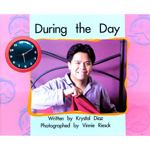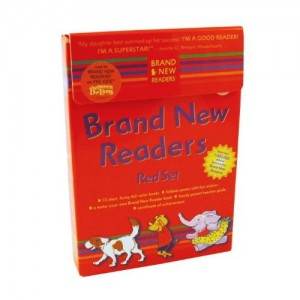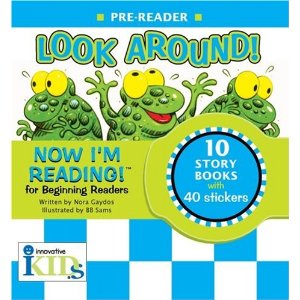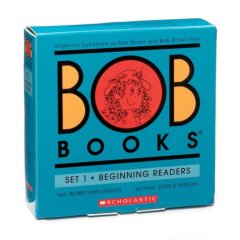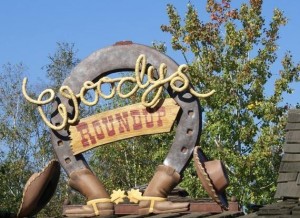curriculum eikaiwa ES extensive reading kids language courses readers Reading Review reviews Springboard readers teaching
by sendaiben
2 comments
Springboard readers
Springboard readers are an Australian series, and it shows in some of the content (titles include Wally the Wombat, Kakadu, and Ringo the Dingo). Most of the books are pretty generic though.
The series consists of sixteen levels, each with eight books, with a mix of fictional and non-fictional content. The books are not phonics based, but start off very easy and the progression between levels is fairly gentle, so they are a good place for students to start reading more extensively. The books are available various booksellers in Japan, but Amazon does not seem to carry them. Each set of eight books is priced at 2,100 yen, so they are not the cheapest option.
My take:
1. the content is okay, although some stories are better than others
2. the artwork is a mixture of pictures and photographs and is functional
3. there is a wide variety of topics, from stories to factual information
4. the audio for the series is available online, and can be copied by schools
Basically this is a fairly average reader series that does the job. It is not particularly cheap, and the content is functional rather than compelling. However, having the ability to make copies of the CDs for students to take home is a great resource for schools, and elevates the worth of this series considerably. Normally buying the CDs for a reader series raises the cost considerably, but Springboard provides the same functionality for free.
We use these books with JHS students, assigning them one to four books to read at home per week. This is a solid workhorse of a series, and one that is probably worth consideration by schools looking to expand their range of readers or ones looking to provide students with more listening input at home. The sheer range of topics means that students that read all the books get a fairly wide exposure to lots of vocabulary and contexts.
Brand New Readers curriculum EFL eikaiwa ES kids language courses readers Reading Review reviews school management teaching
by sendaiben
2 comments
Brand New Readers
Continuing my series of children’s reader reviews, I’d like to talk about a little-known gem today.
Brand New Readers (official site here) have a terrible, genetic name, but are actually wonderful.
They are not phonics-based, but rather are short, well-written, engaging stories with very attractive illustrations and great characters. They are available from Amazon.jp in a variety of formats, including hardcover books with several stories and boxed sets of paperback individual stories. We have both, and get a lot of use out of them. The boxed sets in particular are great value: they cost less than 1000 yen for ten books, some stickers, and a couple of other certificates and parent/teacher guides.
My take on the series:
1. great characters and stories (I like Piggy and Mouse the best)
2. easy to read and fairly repetitive, useful language
3. not phonics-based, but good for students starting out with reading post-initial phonics
4. great value
I love this series, and recommend it both for storytelling in class (the stories are just the right length to read one or two at the end of the class) and for students to read individually, either in class or at home.
curriculum EFL ES extensive reading kids phonics readers Reading reviews school management teaching
by sendaiben
2 comments
Now I’m Reading phonics readers
Now I’m Reading is a phonics program consisting of five levels of books, from pre-reading to independent. The books come in packs of 10 in a durable and attractive binder. Books can be read as a set or taken out to be read individually. The official website contains lots of information about the series, as well as downloadable activities.
Like Bob Books, this is also a great value option. One set is just over 1300 yen from Amazon.jp, making individual books cost about 130 yen. The production values are better than Bob Books: the binders are excellent and the books are printed in colour on thicker paper. The illustrations are also very attractive.
My take on the books:
1. the books are attractive and appealing to students (I like them too)
2. the pre-reader level (pictured above) makes great mini-story books to read aloud in class (it is not phonically graded)
3. the phonics levels are well-structured, but the stories suffer somewhat from phonics-itis (where the story comes second to the phonics target, resulting in awkward or boring stories)
4. great value
5. easy for students to read individually in class or take home for homework
On the whole, I am quite a fan. While they are not as good as Jelly and Bean (mainly because of how the phonics stories are constructed), they are much cheaper and clearly better than similar products in the same price range. If nothing else I really recommend the pre-reader level as really cheap story books.
Has anyone else used Now I’m Reading?
curriculum EFL eikaiwa ES extensive reading kids language courses phonics readers Reading reviews teaching
by sendaiben
leave a comment
Bob Books children’s phonics readers
Bob Books are a great low-cost option for schools that want to start phonics practice with students but don’t have the funds available for more extensive purchases.
The newest version consists of five sets (each containing twelve books), which are available from Amazon.co.jp for just over 1200 yen. As this works out at just over 100 yen per book, they are excellent value for money. There are also older versions that contain similar books in slightly different configurations with different names.
We bought our Bob’s Books quite a few years ago, and used them until we found Follifoot Farm. We haven’t really used them since.
My thoughts on the series:
1. the phonics progression is handled quite well, and they are decodable
2. the language used in the books is not graded, making them somewhat challenging for EFL students at times
3. they feel quite cheap, being printed on thinner paper in black and white
4. the pictures are simple line drawings
5. I feel the stories are not particularly inspired, and many of them are driven solely by the phonics rather than the story itself
In short, these are a cheap and relatively effective option. They are certainly better than nothing, but they are not in the same league as Follifoot Farm. If you can’t afford anything else, they will at least get your students reading.
Anyone else use Bob Books?
Admin EFL extensive reading kids language courses readers Reading Review teaching
by sendaiben
6 comments
Children’s Readers Roundup
Rather than try to come up with a new topic every couple of days, I have decided to review all the children’s readers we use and write one post for each series. That should keep me going for a while, and hopefully turn into a useful resource for teachers considering their next purchase.
I have written briefly about a couple of series on the blog:
Story Street (10.12.22)
Oxford Reading Tree (10.10.23)
SRA (09.08.13)
but they were all fairly superficial posts. I plan to go much more in-depth this time around. There will also be a big comparison post at the end.
I’m quite excited about this project.
There is just one concern, which is the legality of posting content as part of a review. Does anyone know what is acceptable with regards to posting photos (of text, artwork, the outside cover of the book, CDs, etc.) taken by me?
I will probably contact the publishers just to make sure, but any advice or experiences would be much appreciated!
